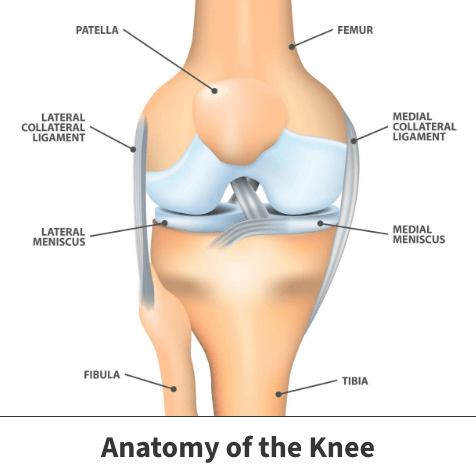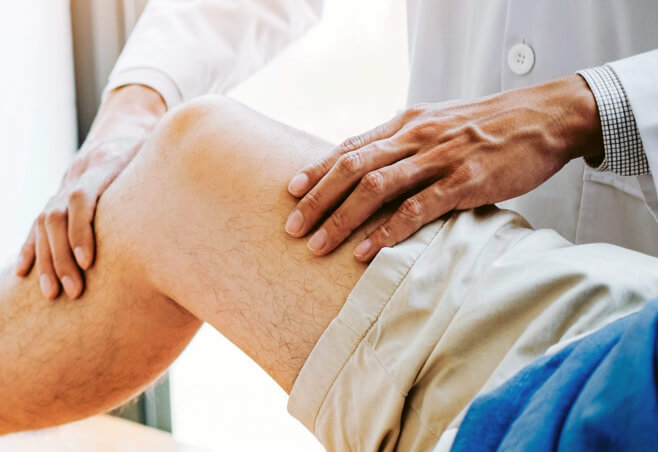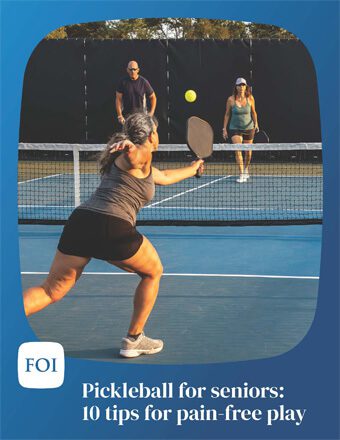MCL tear
Torn medial collateral ligament injuries
Your knees play a major role in helping you carry out routine activities such as walking, bending, supporting your legs, and balancing your body weight. Knee injuries can make any of these efforts challenging and painful.
One such problem is a tear or sprain within the medial collateral ligament, which is also abbreviated as the MCL.
Anatomy

The knee is the largest joint in the body. It is made up of a collection of bones, soft tissues, muscles, and blood vessels. The knee is considered a hinge joint because it allows the leg to perform different movements like bending and twisting without easily popping out of place.
Three major bones are contained within the knee – the tibia, femur, and patella. Connecting these bones are collections of strong, elastic tissues known as ligaments. The medial collateral ligament prevents knee bones from sliding and shifting. Additionally, it helps the knee rotate and maintain stability.
About
Damage to this ligament, such as sprains or tears, can interfere with its ability to perform these roles and cause a host of uncomfortable and possibly debilitating symptoms.
Causes
Typically, these injuries are caused by immediate trauma to the knee. Such sprains or tears are common in athletes competing in contact sports like football. The biggest risk factor is participating in activities in which your knees experience a great degree of a person-to-person contact or where they are forced to twist and turn repeatedly.
Learn more about the signs of MCL tears and other pickleball knee injuries.
Athletic competition is not the only known cause of these mishaps. Other traumatic events, including car accidents and serious falls, also result in a high number of cases.
MCL injuries are divided into three categories or grades:
- Grade 1 – With this grade, the ligament stretched but did not sustain any serious damage.
- Grade 2 – The ligament is partially but not completely torn. You may experience noticeable pain and instability.
- Grade 3 – These most severe events occur when your ligament is completely torn, leaving your knee significantly unstable.

Symptoms
Symptoms often vary depending on what grade injury you sustained. You might have the following:
- Pain
- Swelling, especially in your knee’s inner part
- The feeling that your knee is locking in place
- A popping sound that typically occurs immediately following the initial injury
Should you experience a Grade 2 or 3 injury, your knee might grow unstable, be unable to bear any weight, and interfere with your ability to walk or even stand.
If not addressed quickly, ligament injuries can worsen, possibly impact other important knee components, and lead to permanent pain and disability.
Diagnosis
Ligament injury symptoms often mimic other common knee problems. Experienced orthopedic specialists can usually diagnose the problem simply by performing a careful visual examination.
Should your doctor believe you injured a knee ligament, they will likely first bend your knee and place a certain amount of pressure on the outside. If the inner part of the knee appears loose or unstable, there is a good possibility your medial collateral is damaged.
If these tests do not confirm the diagnosis, your doctor will likely order diagnostic imaging tests like X-rays and magnetic resonance imaging (MRI). These tools capture photos of your knee’s inner workings to help reveal any damage.
Treatment
The injury’s severity is often the most important factor your doctor considers when creating a treatment plan. Therapy usually ranges from rest and careful observation to surgery.
Nonsurgical treatment
Mild cases often heal on their own provided you rest your knee and follow home care tips such as:
- Compressing your injured knee using some type of brace
- Staying off your feet as much as humanly possible
- Using crutches when you must move around
- Placing ice on the injured area
- Keeping your leg elevated above your heart to increase blood flow to the injured knee
If you experience pain, over-the-counter medications like non-steroidal anti-inflammatory drugs, (NSAID’s) such as aspirin, ibuprofen (Motrin, Advil) and naproxen (Aleve), can relieve your discomfort.
Moderate injuries can also benefit from physical therapy. A physical therapist will create a number of exercises designed to ensure your knee and surrounding structures maintain their strength and range of motion.
MCL tear surgical intervention
In a severe Grade 3 MCL tear, surgery might be needed to repair and reattach the damaged ligament. Occasionally, arthroscopic surgery (when a tiny camera is inserted into your knee) is performed before the actual ligament repair. It enables surgeons to determine the injury’s severity and if any other potentially complicating issues are present.
In MCL surgery, your surgeon repairs and then reattaches the torn ligament to the bone it separated from. Typically, this action is completed using devices such as anchor sutures, staples, or screws.
Most people experience complete recovery regardless of whether surgery used.

Pickleball for seniors: 10 tips for pain-free play
Videos
Related specialties
- ACL Injuries
- Arthroscopic Chondroplasty
- Articular Cartilage Restoration
- Deep Thigh Bruising
- Fractures of the Tibial Spine
- Iliotibial Band Syndrome
- Lateral Collateral Ligament (LCL) Injuries
- MACI
- Meniscus Tears
- Muscle Spasms
- Muscle Strains of the Calf
- Partial Knee Replacement
- Patellar Fracture
- Quadriceps Tendon Tear
- Runner's Knee
- Senior Strong
- Shin Splints
- Total Knee Replacement Surgery
